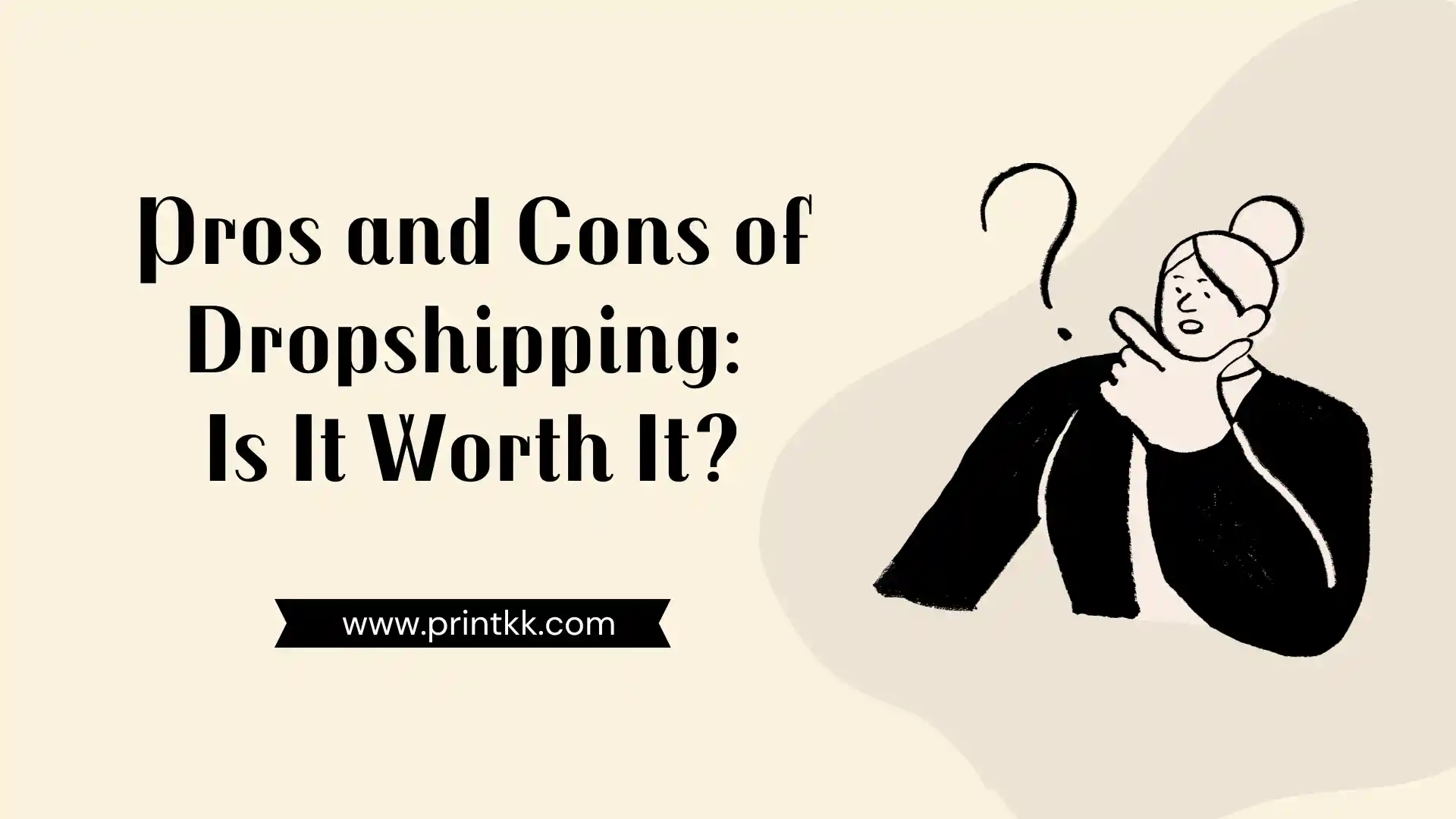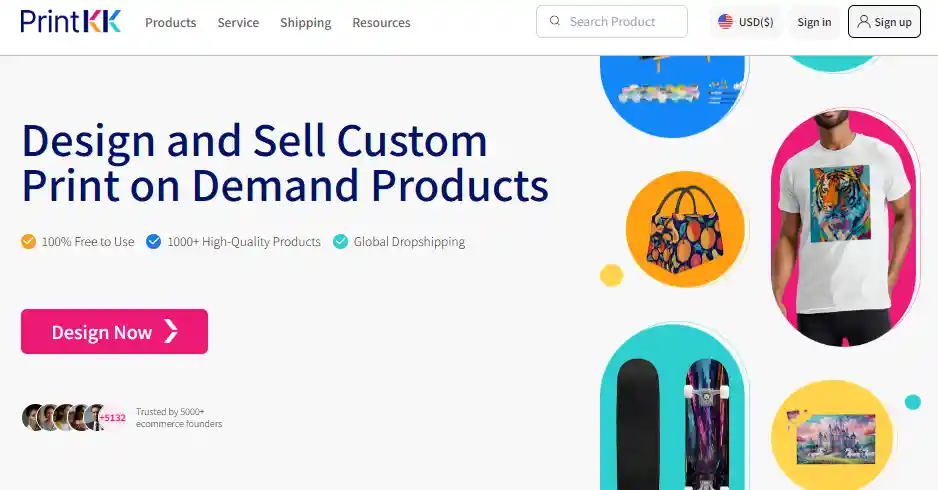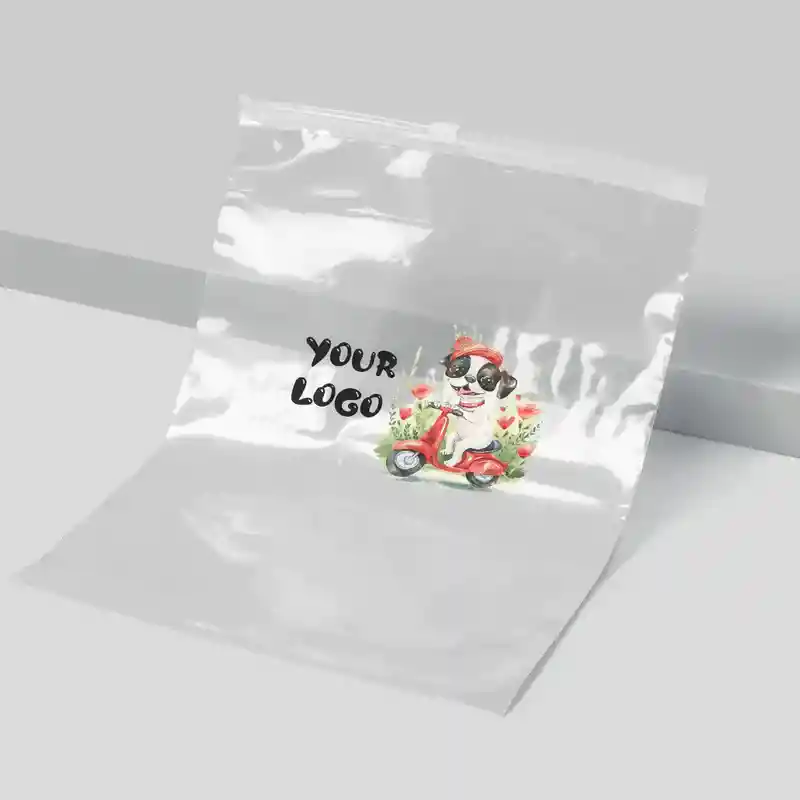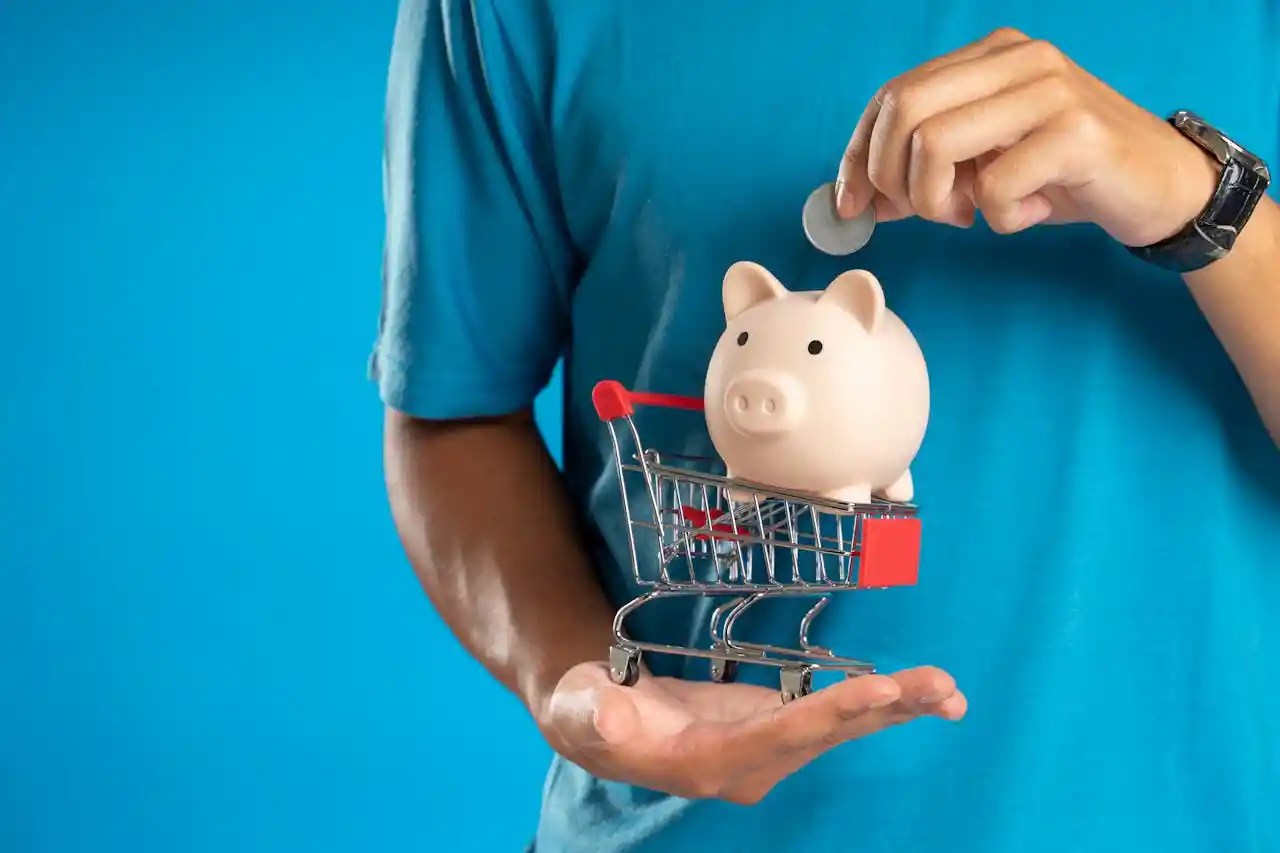
In recent years, dropshipping has become a buzzword for entrepreneurs looking to start an online business with minimal upfront costs. As we move into 2025, the model remains popular—but is it still a smart choice?
This article breaks down the pros and cons of dropshipping to help you understand how it works, what to expect, and whether it aligns with your goals. Whether you're just getting started or rethinking your e-commerce strategy, knowing the advantages and limitations is key to making informed decisions.
What Is Dropshipping and How Does It Work?
What Is Dropshipping?
Imagine selling products online without ever touching them. That's dropshipping. You act as the middleman between customers and suppliers.
No storage, no packaging, no shipping headaches.
Your job? Set up a store (like Shopify or WooCommerce) and list items you don't own.
When someone buys, the supplier ships it directly to them.
You keep the profit difference.
How Does Dropshipping Work?
1. Choose Your Niche
Pick products people want but aren't oversold. Think quirky phone cases, eco-friendly kitchen tools, or pet accessories.
Use tools like Google Trends or TikTok Creative Center to spot demand.
2. Partner with Suppliers
Platforms like AliExpress or SaleHoo connect you with manufacturers. Many offer fast shipping and product quality checks.
High-quality print on demand suppliers like PrintKK can not only provide you with more competitively priced source supplies, but also support personalized customization on all products.

3. Build Your Store
Use templates to create a clean, trustworthy site. Add product photos and descriptions (you can start with supplier content but personalize it).
Set prices about 2–3× higher than supplier costs to ensure room for profit and ad spend.
4. Market Smartly
Run Facebook or Instagram ads targeting interests and behaviors. Make short videos on TikTok that demonstrate how your product solves a problem. Example: "Tired of messy spills? This leak-proof bottle helps."
5. Process Orders Automatically
When a customer buys, your system sends the order to the supplier. They pack, label, and ship it on your behalf. You'll get tracking updates to share with your customer.
6. Handle Customer Service
Answer questions about delivery times, product details, or returns. Good communication builds trust. Some suppliers also offer return management, which can save time and effort.
Pros and Cons of Dropshipping
Dropshipping is a popular way to start an online store without managing inventory. Your supplier handles storage and shipping, letting you focus on sales.
It's appealing for beginners, but it comes with trade-offs. Below, we explore the pros and cons in separate tables to help you decide if it's the right path for your business.
Pros of Dropshipping
Dropshipping lowers the barriers to starting an ecommerce business. You don't need a big budget or a warehouse, making it ideal if you're testing the waters or want to sell diverse products like mugs or coin purses.
It's a flexible model that lets you experiment without heavy upfront costs. The pros below show why many choose this approach for their online venture.
Pros | Description |
Low startup costs | Start with just $100-$500 since you pay for products only after a sale. |
No inventory hassle | Suppliers store and ship products, so you don't need a warehouse. |
Flexible product range | Offer mugs, gadgets, or more without buying stock upfront. |
Beginner-friendly | Platforms like Shopify simplify setup, even if you're new. |
Cons of Dropshipping
Dropshipping isn't perfect and can present challenges that test your patience and strategy. You'll deal with tight profit margins and rely on suppliers for timely deliveries, which can affect customer trust.
Competition is fierce, so you'll need clever marketing or a unique brand to shine. The cons below highlight what might hold you back.
Cons | Description |
Slim profits | Supplier fees reduce your earnings per sale. |
Less shipping control | Supplier delays or errors can upset customers, and you take the blame. |
High competition | Many sellers use the same suppliers, so standing out is tough. |
Customer service challenges | Handling complaints or returns is tricky without direct product access. |
Dropshipping offers an accessible start, but its challenges require careful planning. Review these pros and cons to see if it fits your goals.
Read More:
Why Dropshipping Has a Low Margin for Error (How to Succeed)
Dropshipping seems easy. You sell products without touching them. But there's a catch. The margin for error is tiny. One mistake can hurt your reputation or profits. To succeed in 2025, you need smart strategies and reliable partners.
Small Mistakes Hurt Big
Customers expect fast shipping and quality products. If your supplier messes up, they blame you. A late delivery or poor-quality item can lose customer trust. You're the face of the business, even if you don't handle the stock.
Profit margins are also tight. Supplier fees, ad spend, and platform charges eat into your earnings. A wrong move — like picking a bad supplier or misjudging demand — can erase your profits.
You Need Diverse Skills
Dropshipping isn't just selling. You're doing:
- Product research
- Marketing
- Customer service
- Supplier communication
Use tools like Google Trends, TikTok, or Amazon search results to spot trending items. But don't just chase what's popular — consider shipping reliability and product quality too.
Branding matters. You want packages that feel like they came from your brand, not a random warehouse. Work with suppliers that offer custom packaging, logos or inserts.

Custom Packaging Bags - Print on Demand Fulfillment - PrintKK
How to Succeed
Be proactive, not reactive. Here are smart habits that help:
- Research supplier reputation
- Test small product batches
- Ask for branding options
Before going all-in, test new products in small volumes. If they flop, move on — no inventory means low risk.
And when something works, build around it. Create a clear brand identity. Respond to customer concerns quickly. Loyalty comes from trust.
Stay Sharp
The key to success is preparation. Vet your suppliers. Track trends. Keep testing and improving.
Dropshipping isn't magic — it's management. With the right systems and mindset, you can turn a risky model into a sustainable one.

How Much Do You Really Need to Start Dropshipping Profitably?
You might've heard stories about people starting with almost nothing and earning thousands every week. Some of those stories are real.
But most skip the part where they lose money first—or spend months figuring things out. So, let's be real about what you actually need to get started with dropshipping in 2025.
If you're starting with $1,000, you're not doomed—but you'll need to be smart. That budget won't go far if you're not careful.
Here's where your money will likely go:
- A Shopify plan or similar platform ($30/month)
- A domain name (about $10–$15/year)
- Basic tools like Canva or email software
- Marketing (this is where most of your money will go)
Advertising is your biggest cost. You need to bring people to your store somehow. Many beginners make the mistake of launching ads before checking if their profit margins even make sense. You can easily burn through hundreds of dollars chasing clicks that never convert.
So what should you do?
- Start lean.
- Understand your product costs.
- Research your market.
- Only start ads when your numbers line up.
Some people choose to grow organically on platforms like TikTok instead. It's slower but cheaper, and it works if you have time and creativity.
Also, don't forget cash flow. When a customer buys from you, such as a travel bags or fridge magnets, platforms like Shopify may hold the money until you've shipped the product.

Custom Round Shape Acrylic Fridge Magnets - Print-On-Demand - PrintKK
That means you might have to pay the supplier before getting paid. If you can't afford to do that, you'll face delays and unhappy buyers. That's when things fall apart.
This is why $1,000 might be tight. You're likely to spend most of it on testing products, running ads, and covering early orders. And even then, there's no guarantee of instant success.
But if you're careful, patient, and willing to learn, you can make progress. You don't need to be a genius or spend a fortune. You just need a plan—and the discipline to follow it.
Is Dropshipping Really Dead in 2025?
You've probably seen it online. Social media posts claim dropshipping is dead. Comments on Instagram, YouTube, or Reddit say it's too hard or too crowded.
But here's the truth:
It's Not Dead, It's Competitive
Dropshipping faces challenges. New rules in the EU and changing tariff policies make it tricky. Competition is real. Many sellers chase the same products.
But that doesn't mean you can't win.
Success comes from standing out. Find unique products or market them better. It's not about saturation. It's about strategy.
Opportunities Still Exist. Take this example:
One seller discovered a product by digging into niche podcasts. They used AI tools to identify what people were talking about, then clipped podcast segments into video ads. Even with 20+ competitors, they ran the product for months—profitably.
That's what works now:
- Research niche markets
- Use AI to spot product trends
- Turn content into scroll-stopping ads
Some claim dropshipping is outdated. These are loud takes, but not always true. A lot of them come from people who tried once, failed, and quit. Or from people who never sold anything in the first place.
So no, dropshipping isn't dead. But lazy dropshipping is.
The key to success is persistence. Find your niche, test it smartly. Be creative, and keep moving forward.
Read More:
Expert Tips
Dropshipping in 2025 offers a great way to start an online business. You can sell products without storing them. It's low-cost and flexible. Beginners find it easy to jump in.
But it's not perfect. Slim profits and competition challenge you. You rely on suppliers for shipping. Customer service falls on your shoulders. Mistakes can hurt your reputation.
Is dropshipping worth it? Yes, if you're ready to work smart. It's a chance to grow your own business. You control your path. Start small, test ideas, and stay focused.
Take the leap in 2025. Plan well, and you'll find success with dropshipping.
FAQs
Is dropshipping legal?
Yes, dropshipping is legal worldwide. You sell products without holding inventory. Just follow local laws, pay taxes, and use trusted suppliers to avoid issues.
Do I need to register a business entity to dropship?
Not always, but it's smart. Registering as a sole proprietor or LLC protects you and looks professional. Check your country's rules for small businesses.
Is dropshipping good for beginners?
Absolutely. It's beginner-friendly with low startup costs. You don't need a warehouse or big budget. Platforms like Shopify make setup easy for new sellers.
Is dropshipping profitable?
It can be. Profits are slim due to supplier fees, but smart product choices and good marketing boost earnings. Test products to find winners.
Does dropshipping work on Amazon?
Yes, Amazon allows dropshipping. Follow their strict rules, like ensuring fast shipping and handling customer service yourself. It's a great platform to start.
Do dropshipping companies ship internationally?
Many do. Most suppliers offer global shipping, but check their policies. International shipping may cost more or take longer, so inform your customers.










 Global Shipping
Global Shipping


 Made in USA
Made in USA



























